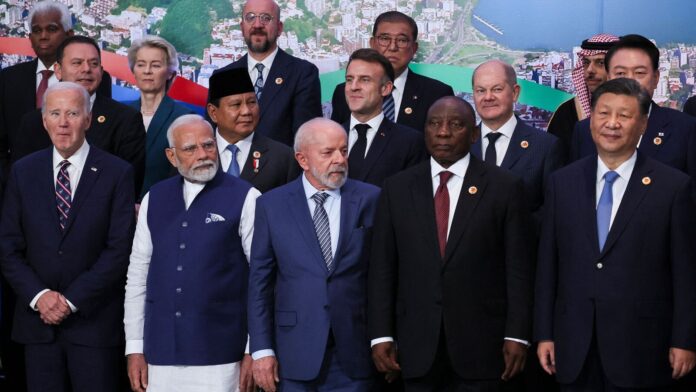India is plagued by electoral populism, China with excessive government interference and the US is embracing protectionism.
Eschewing these positions is crucial for sustainable growth and the stability of these nations as well as the global economy.
India’s vibrant democracy faces challenges such as excessive populism, policy stagnation and reforms inertia.
About 44% of India’s labour force still works in agriculture, which contributes only 17% to gross domestic product (GDP). For inclusive growth, it’s essential to shift the bulk of India’s agricultural labour to manufacturing.
This requires land reforms to enable industrial and infrastructural development, labour reforms to promote easy hiring of labour, alongside improving the ease of doing business.
These changes would position India as a credible manufacturing alternative to China, create jobs, and boost productivity, preventing it from falling into a middle-income trap.
For sustained growth, India needs a new political and social consensus on labour and land reforms, apart from freebie rationalization and fiscal discipline. Policymakers should engage businesses, civil society and the political opposition to promote them.
India’s democracy must evolve to focus on long-term development over short-term political gains. Citizens must demand policies that secure the future and hold leaders accountable for ensuring lasting progress.
China’s blend of state control and market liberalization powered its four-decade-long growth spurt. However, centralization of power under President Xi Jinping is eroding its economic promise. Its total factor productivity growth fell from 2.8% before the global financial crisis of 2008-09 to 0.7% after.
China’s foreign direct investment declined for 12 consecutive months till May 2024; between January and May 2024, it dropped by 28%. In September, China’s outbound shipments grew 2.4% and imports grew 0.3%, the slowest in a while.
At 53.4% of GDP, China’s consumption levels are notably low by global standards. Recently introduced measures, such as the easing of property ownership rules, slashing of interest rates and reduction in stamp duty on stock trades, are yet to boost sentiment.
To make consumption a significant driver of growth, China must enhance social safety nets, promote service-sector growth, inject substantial fiscal stimulus, incentivize spending (through consumer goods subsidies and trade-in programmes) and undertake income redistribution among the middle class.
China’s excessive reliance on debt-fuelled investments and subsidies for manufacturing, often driven by provincial competition, has created systemic inefficiencies. To sustain its growth and mitigate risks, China must cede greater control to market forces.
Moreover, Beijing must introduce transparent fiscal frameworks and enforce stricter financial discipline, particularly among provincial governments, to prevent resource misallocation and reduce debt.
China’s centralized governance model has enabled swift decision-making. However, it must embrace a more inclusive approach that allows for dissent and constructive criticism to ensure effective and equitable policymaking.
The US, a beacon of free-market capitalism, is increasingly adopting protectionism, withdrawing from multilateralism and retreating from global economic leadership. While the intention behind US tariffs is to bring back manufacturing jobs, the ramifications will be adverse.
Tariffs raise the cost of goods produced domestically, burdening American consumers and businesses alike. Trump’s aim of reducing America’s trade deficit is at cross purpose with his goal of maintaining the dollar as the world’s reserve currency.
While addressing the challenges posed by China’s unfair trade practices is a valid aim, equating other nations such as India with China overlooks the mutual benefits of cooperation.
India as a fellow democracy and a rising global power shares many strategic and economic interests with the US. Washington must adopt a more nuanced approach, distinguishing between competitors and partners in its trade policies.
To maintain its pole position, incoming US president Donald Trump must re-engage the global community by promoting trade liberalization, strengthening alliances and supporting multilateral institutions.
Domestically, the US must address the root causes of protectionist sentiment, such as income inequality and job displacement due to globalization.
Investments in education, reskilling programmes and infrastructure can help create a more inclusive economy that benefits all Americans.
It is said that most politicians know what they need to do, but doing it would cost them power. Therefore, the public holds the key to driving change. Indian citizens must demand reforms that prioritize long-term development over immediate electoral gains.
Chinese citizens must advocate greater market freedom and financial transparency. American citizens must reject protectionist policies and champion global cooperation. Governments too must foster environments that encourage civic participation.
This involves ensuring transparency, protecting individual freedoms and creating platforms for dialogue among policymakers, businesses and the public.
The author is a strategy and public policy professional. His X handle is @prasannakarthik
#China #India #pursue #policies #aimed #common #global #good
